As the industry shifts away from diesel power, groundbreaking technologies are rapidly emerging, delivering not only lower carbon footprints but also greater adaptability in meeting production demands.
Power and transport are the two biggest sources of CO2e emissions for productions. Getting these down to zero should be a priority. At first glance, this seems impossible, but there are multiple lower-carbon energy options becoming widely available, as well as easy wins that productions can start adding to their operations now.
Using mains power from a grid powered by zero-carbon energy is the ideal. Some studios – particularly those that have scored well on BAFTA albert’s Studio Sustainability Standard ratings – should be on green energy tariffs already, making it easier for productions to claim they are fully powered by low-carbon energy. But production is rarely confined to a single facility. Where does green power come from when you’re away from the studio?
Location teams may have the option to tie into the grid, but electrical grids vary widely from country to country and provider to provider. The good news is that energy is slowly becoming less carbon-intensive year on year. Fossil fuels produced only around 33% of the UK’s energy in 2023 – about 30% from natural gas (methane) and the rest a roughly equal mix of oil and coal. But most production power comes from generators. Even in the middle of London, it’s often easier for productions to use generators than grid power.

Dump diesel
Diesel should no longer be considered a viable fuel for onset generators. Setting the CO2e emissions aside, the health effects from breathing nitrogen oxides, carbon monoxide, and particulate matter from diesel generators should be reason enough to stop using them. There are now plenty of alternatives to diesel, as well as well-researched pathways laid out for how the industry can move beyond diesel for more sustainable options. Diesel fuel can be immediately swapped out for HVO (Hydrogenated Vegetable Oil) diesel (aka “biodiesel”), which is made from vegetable oils. Using HVO still means internal combustion, which still means the release of greenhouse gases, but HVO CO2 emissions can be up to 90% lower than standard diesel.
However, HVO – and virtually every industry decarbonisation plan supports this – is a transition fuel. It’s not meant to replace diesel but to keep businesses running combustion technology until they invest in zero-carbon upgrades. Think of HVO as carbon emissions first aid – it’s designed to stop the bleeding until you get the problem fixed. Not all HVO is equally sustainable, though, and you should check that your supplier isn’t mixing in fuel from palm oil plantations that may be devastating the environment.
A new report from The Fuel Project, part of ongoing work by Film London and Creative Zero to rethink how productions use power, estimates emissions from mobile power units within London’s supplier fleets at 64,000 tonnes of CO2e annually. The report, The Shift: Decarbonising Supplier Transport and Mobile Power for London’s Film and Television Industry, is one of the most thorough assessments of sustainability and production power in the UK, providing a carbon footprint analysis of London film and TV transport and mobile power fleets, and a plan for the shift to low-carbon technologies. It sets out a timeline for the transition, with costings and assessments of its impact on businesses. It recommends that 49% of all mobile power run on HVO by the end of 2025 and that the last of the traditional generators (which should already be using HVO) be retired by 2036. If this article does nothing else than make you download the report and read it, it will have succeeded. You can download it here.
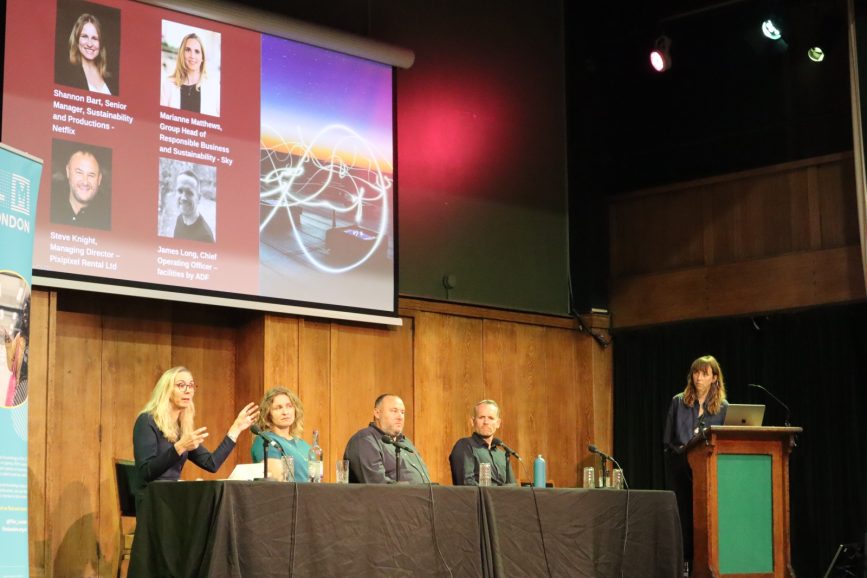
Batteries bigger and better
Battery generators are becoming common enough that careful discrimination is required in selecting the best options. New upgrades are released every year, but the technology is stable enough that there’s no reason not to jump in now. The creative impact of batteries over internal combustion generators is instantly evident. First, they run virtually silently, which means they don’t need to be sequestered away from the set for sound recording. That also means fewer complaints when filming in populated areas, even to the point where you can run a generator all night and locals can still sleep well.
The variety of capacities and sizes enables power to be supplied in conditions that would be impossible with diesel generators, including tight or enclosed spaces. Different sizes mean you can use smaller batteries for specific purposes, rather than keeping a diesel generator running at full power, only to support a fridge at night. Batteries still don’t perform as well as internal combustion generators in very cold weather. It may still be a couple of years before you can rely on full battery power on a winter shoot in Scandinavia.
Sodium alternatives
Newer battery technologies, like Anton-Bauer’s Salt-E Dog, are emerging alongside the lithium-ion standard. Sodium-ion batteries (SIBs) are gaining attention, particularly from EV manufacturers, due to the abundance and accessibility of sodium compared to lithium, which is more unevenly distributed and raises environmental and human rights concerns. Sodium-ion batteries also offer greater stability—broken sodium batteries are less hazardous than lithium, which can ignite. Additionally, sodium batteries boast a longer shelf-life, remaining functional after months or even years of inactivity while still being rechargeable to full capacity. There are downsides, though. Sodium-ion batteries don’t have as high an energy density as lithium batteries, so they need to be larger to provide the same output. While the technology will improve, size and weight are essential considerations on a film set, especially on location. The tech is still expensive, making adoption difficult given that investment in lithium batteries already makes some suppliers hesitant.
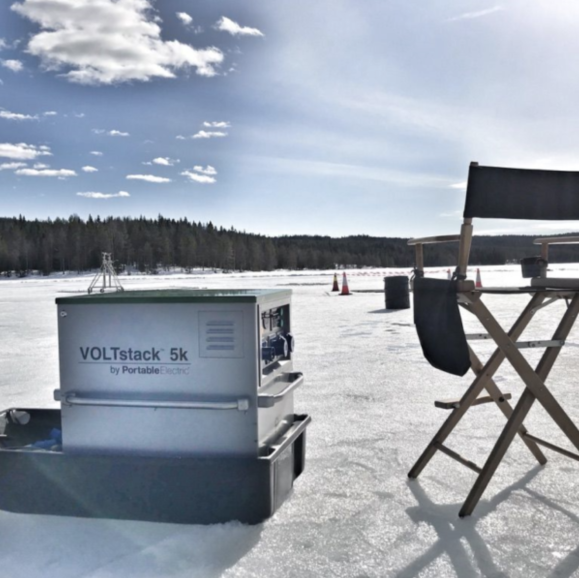
Hydrogen power trials
Hydrogen has also been trialled for on-set power. In 2021, the BBC nature programme Winterwatch became one of the world’s first outside broadcasts to use a hydrogen generator to power multiple sites. Last year, the 2023 PGA Championship became the first sports broadcast to be powered by green hydrogen with two hydrogen-powered generators from GeoPura. Hydrogen is produced by passing an electric current through water. Both productions used “green” hydrogen – created by electricity from zero-carbon sources. But there’s a whole rainbow of hydrogen types, most of which are less sustainable. “Grey” hydrogen, the most common, is produced using natural gas. “Blue” hydrogen is the same as grey but uses carbon capture to reduce emissions. Other varieties include black, brown, pink, turquoise, yellow, and white.
Where your hydrogen comes from is important – using hydrogen power is less impressive if it’s created by burning coal (brown and black hydrogen). Hydrogen also must be delivered, often by trucks running on diesel. Committing to hydrogen means committing to the infrastructure to create and deliver it, which won’t be as efficient as just using grid electricity. Finally, hydrogen molecules are tiny, which means hydrogen leaks, further reducing its efficiency. Hydrogen will be part of our energy mix someday, but it won’t be the ideal solution to every problem.
The pressure to decarbonise rapidly may feel overwhelming but adhering to a few simple principles can guide decision-making. First, if you see diesel burning, run the other way and tell a grown-up. Second, the most sustainable power source is the one that’s turned off – don’t use power unless needed. Finally, remember that every kilogram of CO2 you keep out of the atmosphere counts.
–
Words: Neal Romanek, The Flint











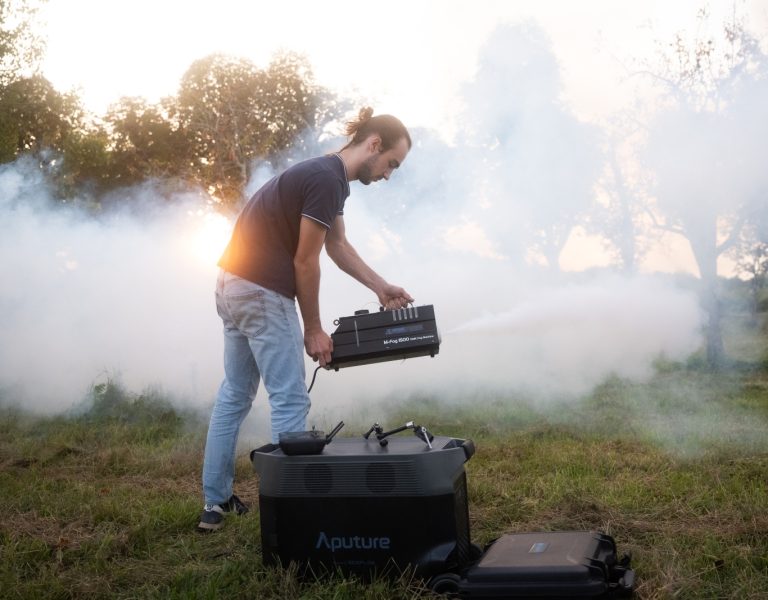
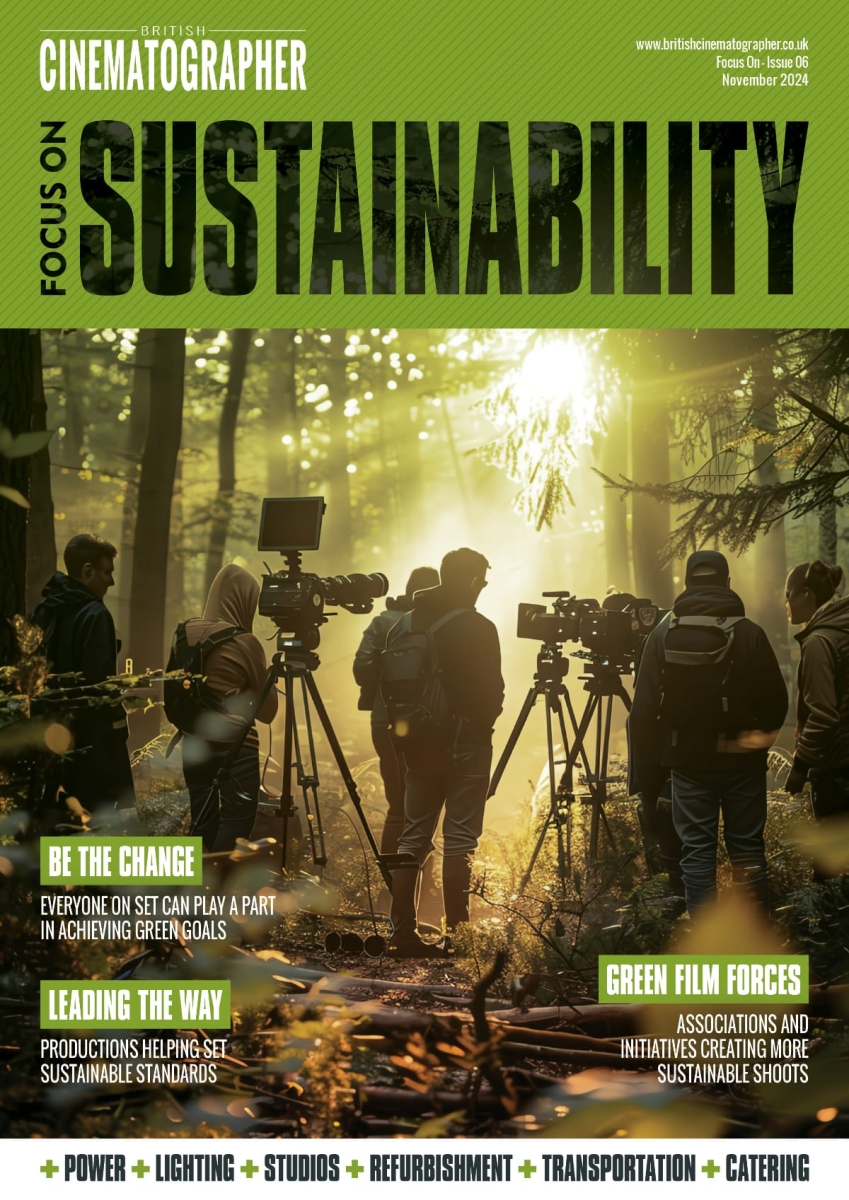
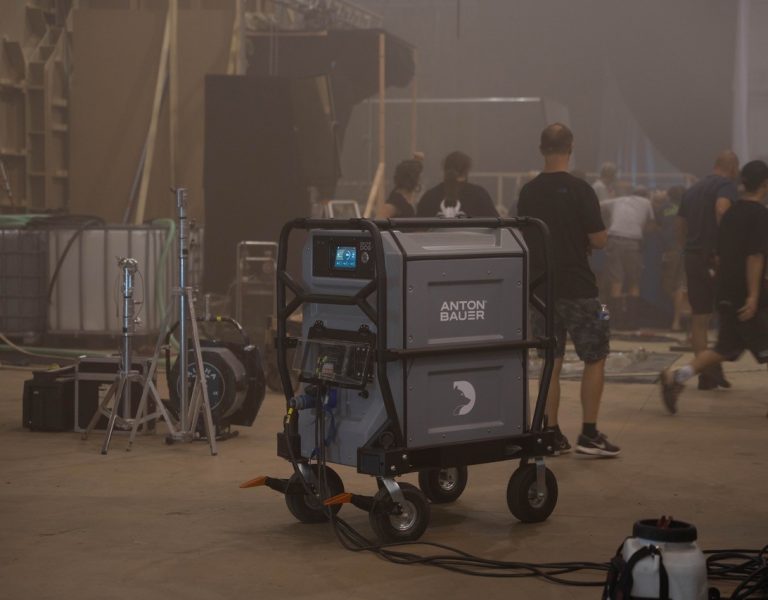
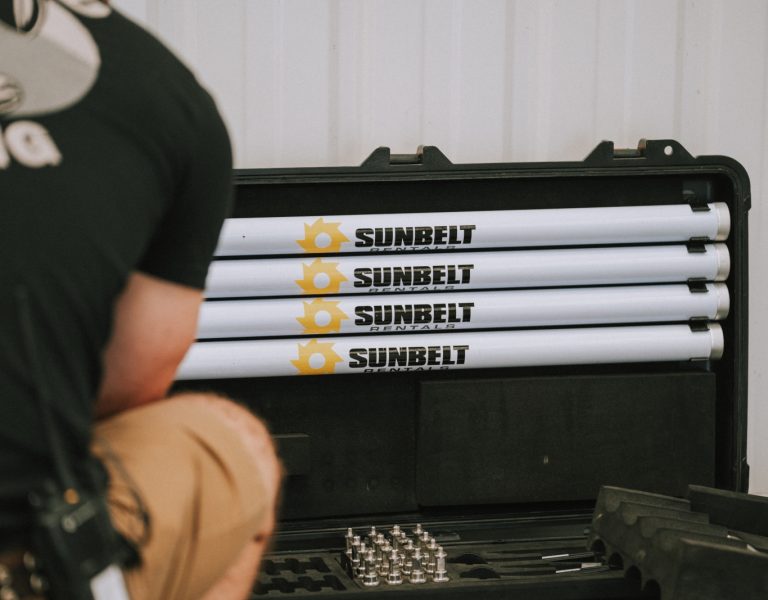
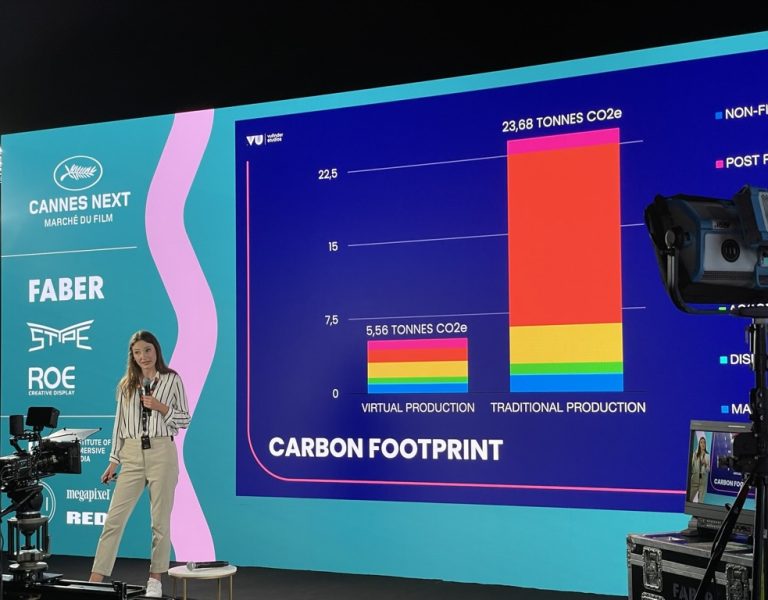




Comment / Laurence Johnson, sustainability manager, Film London